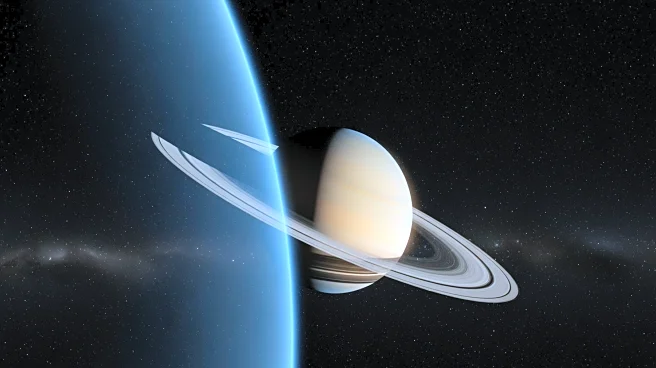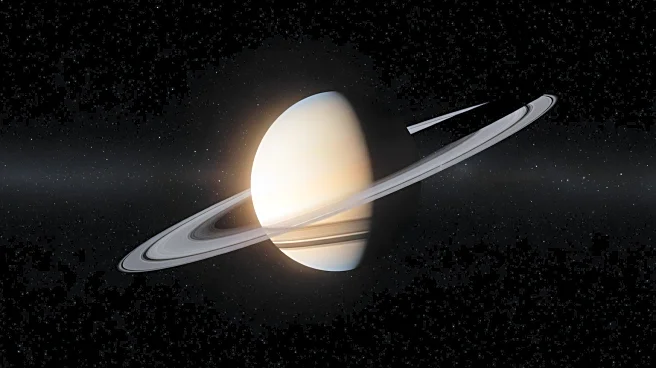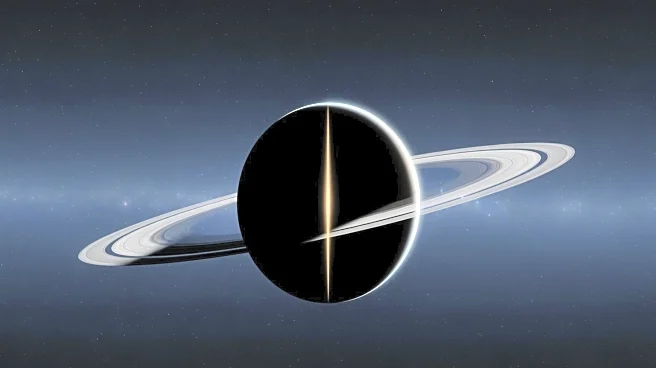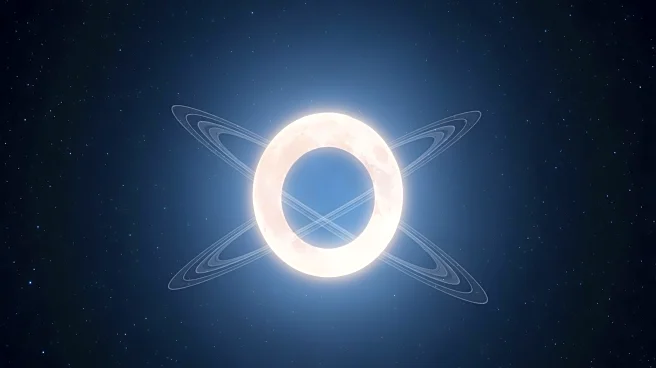What's Happening?
On November 23, Saturn's rings will appear to vanish when viewed through a telescope due to a phenomenon known as a 'ring plane crossing.' This occurs when the rings align edge-on with Earth, making them nearly invisible. The event is a result of Saturn's 26.7-degree
orbital tilt, which periodically alters our view of its rings. The last ring plane crossing happened in March 2025, but was obscured by the sun's glare. This time, Saturn will be visible in the southeastern sky, appearing as a bright 'evening star' in the constellation Pisces.
Why It's Important?
The ring plane crossing offers a unique opportunity for astronomers and stargazers to observe Saturn's rings from a different perspective. It highlights the dynamic nature of planetary systems and the influence of orbital mechanics on celestial observations. This event can enhance public interest in astronomy and encourage amateur astronomers to engage with the night sky. Understanding such phenomena contributes to our knowledge of planetary behavior and the intricate dance of celestial bodies.
What's Next?
As Saturn's rings gradually open up over the coming years, stargazers can continue to observe changes in their appearance. The event encourages the use of telescopes and astronomy apps to track Saturn's position and view its atmospheric details and moons. Future ring plane crossings will provide additional opportunities for observation and study, fostering ongoing interest in planetary science.














